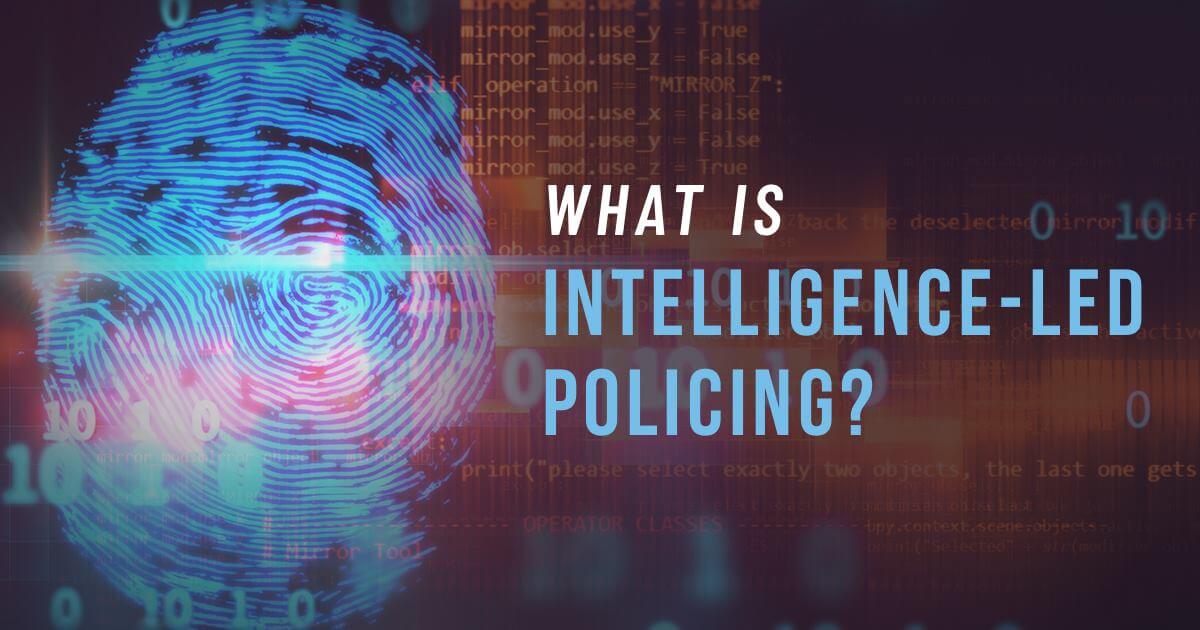The concept of “intelligence-led policing” began to take hold in some of the nation’s metropolitan police departments in the aftermath of the terrorist attacks of Sept. 11, 2001. In more recent years, the practice has expanded further, with many smaller and midsized departments creating their own internal intelligence-led policing units.
As part of its response to 9/11, the NYPD created a counter-terrorism unit and reorganized its intelligence division to form what is now called the NYPD Intelligence Bureau. Its mission is to “detect and disrupt criminal and terrorist activity through the use of intelligence-led policing.”
The LAPD created its Counterterrorism and Criminal Intelligence Bureau in 2003, a move that involved “converging community policing and counterterrorism strategies and implementing them under the guiding philosophy of intelligence-led policing.”
But exactly what is intelligence-led policing?
How Intelligence-Led Policing Works
Intelligence-led policing (often shortened to ILP) is a practice that leverages technological advances in both data collection and analytics to generate valuable “intelligence” that can be used to more efficiently direct law enforcement resources to the people and places where they are likely to do the most good.
ILP also depends upon enhanced collaboration with community members who have valuable observations and information about possible criminal activity, as well as with other law enforcement agencies.
[RELATED] Using Education to Ease Police Community Tensions and Produce a More Effective Police Force >>
Today intelligence-led policing is considered one of the most important law enforcement philosophies to effectively fight and prevent crime. Due to its focus on preventing crimes before they happen, it is regarded as an essential counterweight to past “reactive” models of policing.
Because its emphasis on data collection can lead to heightened focus on suspected offenders, past offenders and potential high-crime “hot spots,” the practice has also raised concerns about privacy among civil liberties advocates.
According to an article in Police Chief Magazine, specific concerns include the idea that the practice could lead to “over-policing in minority neighborhoods” or that “tracking specific individuals who are considered potential perpetrators … even when they have done nothing wrong, borders on an invasion of a person’s right to privacy.”
However, proponents of intelligence-led policing counter that “computer-based analysis … eliminates any bias that might be inherent in human-based decisions,” that law enforcement agencies put in place policies and procedures to minimize the potential for profiling and that the practice has proven to be successful and is a necessary tool for reducing crime.
How ‘Information’ Becomes ‘Intelligence’
In a report on intelligence-led policing, the U.S. Department of Justice dissects the important distinction between information and intelligence, suggesting that the clearest explanation can be summed up in the equation “information plus analysis equals intelligence.”
The DOJ report asserts that “without analysis, there is no intelligence” — that “intelligence is not what is collected, it is what is produced after collected data is evaluated and analyzed,” in this case both by computers and by law enforcement professionals.
[RELATED] The Case for More Effective Law Enforcement Leadership Training >>
This view is supported by Dr. Jeremy Carter, the author of “Intelligence-Led Policing: A Policing Innovation.” Interviewed by PoliceOne.com in an article titled “10 Steps to Effective Intelligence-Led Policing,” Carter said, “That’s a key distinction — raw information is just information. It’s a tip, it’s a lead. But it has to go through some sort of analytic process to become intelligence.”
The theory behind intelligence-led policing, he said, is that “you cast this wider or more encompassing net of potential information inputs and you push that information into some type of analytic process, and the result of that analytic process creates intelligence.”
Intelligence-Led Policing Success Stories
Another Department of Justice report, “Reducing Crime Through Intelligence-Led Policing,” details a series of intelligence-led policing success stories, including:
- In Texas, the Austin Police Department reported a reduction in violent crime as well as burglaries and other repetitive offenses, including a 15 percent reduction in burglary of vehicles. Their overall goal was to “develop a method to identify the 20 percent of the population that causes 80 percent of the crime problems.”
- In Medford, Oregon, an increased focus on intelligence-led policing strategies including “cooperation between the police and their constituents rarely seen in contemporary society” were instrumental in achieving an “astounding” clearance rates for all crimes in excess of 80 percent.
- The San Diego Police Department put in place a strategy that involved “a combination of criminal intelligence, problem solving, proactive enforcement, situational crime prevention and technology.” By increasing the number of informants providing information on gang activity from four to 60, the SDPD was able to determine that 16% of gang members were responsible for 47% of the crime. They were then able to dramatically reduce gang-related violence and crime by focusing more attention on “hot people, times, locations and property.”
Key Components and Strategies for Intelligence-Led Policing
Several specific law enforcement strategies that fall within the framework of intelligence-led policing include the following:
Community-Oriented Policing
“Intelligence-Led Policing: The Integration of Community Policing and Law Enforcement Intelligence,” a report published by the International Association of Directors of Law Enforcement Standards and Training, asserts that community-oriented policing is an essential component of intelligence-led policing.
The practice of community policing, it says, has developed skills in many law enforcement officers that are directly related to information and intelligence sharing, including:
- Environmental scanning
- Effective communications with the public
- Citizen involvement in reporting activities
- Community mobilization to deal with problems
The report emphasizes that: “New dimensions of law enforcement intelligence and counterterrorism depend on strong community relationships.”
Hot-Spot Policing
A National Institute of Justice report on hot-spot policing says it is now used by a majority of U.S. police departments and involves focusing resources and crime prevention strategies on “small geographic areas or places, usually in urban settings, where crime is concentrated.” Hot spots, it continues, are generally defined as specific locations where “the occurrence of crime is so frequent that it is highly predictable, at least over a one-year period.”
Strategies utilized to control crime in areas identified as hot spots include:
- General law and order maintenance
- Drug enforcement crackdowns
- Increased gun searches and seizures
- Zero-tolerance policing
Partnership Model of Policing
“Another key pillar to ILP,” according to the PoliceOne.com article mentioned above (“10 Steps to Effective Intelligence-Led Policing”), involves active collaboration with other local, state and federal law enforcement agencies. The reasoning behind this is simple: “Agencies that partner with each other can leverage resources they wouldn’t have alone.”
Considered particularly important for an intelligence-led approach to counter-terrorism efforts, the partnership model of policing relies heavily upon the open exchange of information. To aid in collaboration, some agencies designate an Intelligence Liaison Officer and take advantage of such resources as the Regional Information Sharing Systems (RISS) Program.
The partnership model also extends to collaborations within departments and with affected communities to ensure that agencies are seeking out every possible source of valuable information.
Problem-oriented policing
A problem-oriented policing report on the National Institute of Justice’s CrimeSolutions.gov website describes this approach as “an analytic method used by police to develop strategies that prevent and reduce crime.”
Under the POP model, law enforcement agencies:
- Identify and prioritize a specific “problem” (for example, repeat offenders, repeat victims or repeat incidents at particular locations or hot spots)
- Closely analyze the problem to determine strategies for effective responses or interventions
- Follow up with focused assessment and fine-tuning to achieve maximum effectiveness
According to the report, problem-oriented policing “overlaps to some extent” with community policing and hot-spot policing. However, “the key ingredients in POP are the selection of a narrowly defined problem type and the application of a wide range of targeted responses intended to reduce the incidence or severity of that problem type.”
For further insight into intelligence-led policing — including in-depth case studies of intelligence-led policing in action — consider reviewing the comprehensive report compiled by the U.S Department of Justice’s Bureau of Justice Assistance, “Reducing Crime Through Intelligence-Led Policing.”





